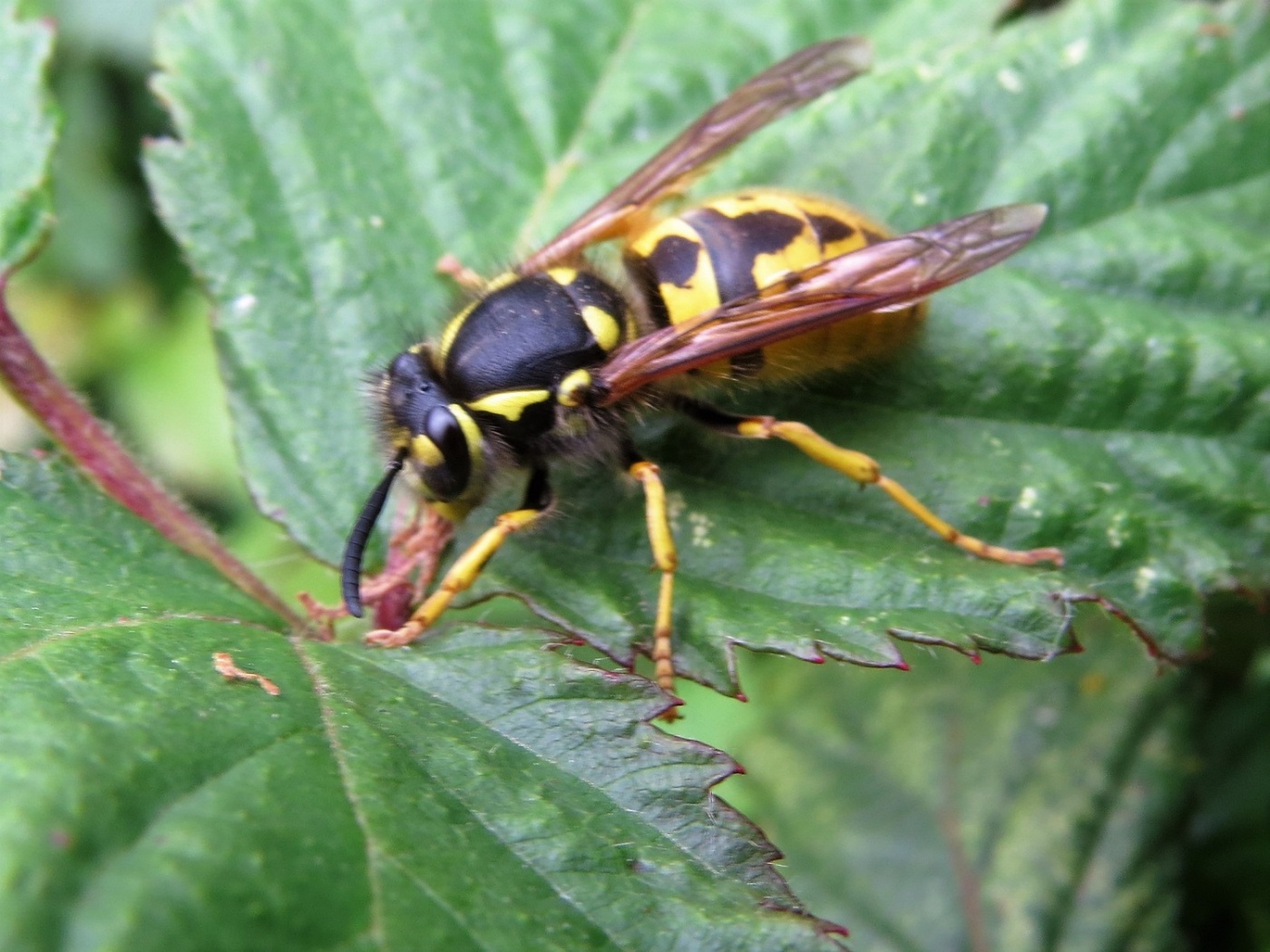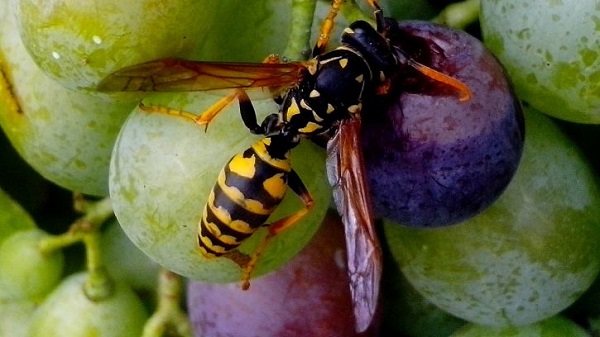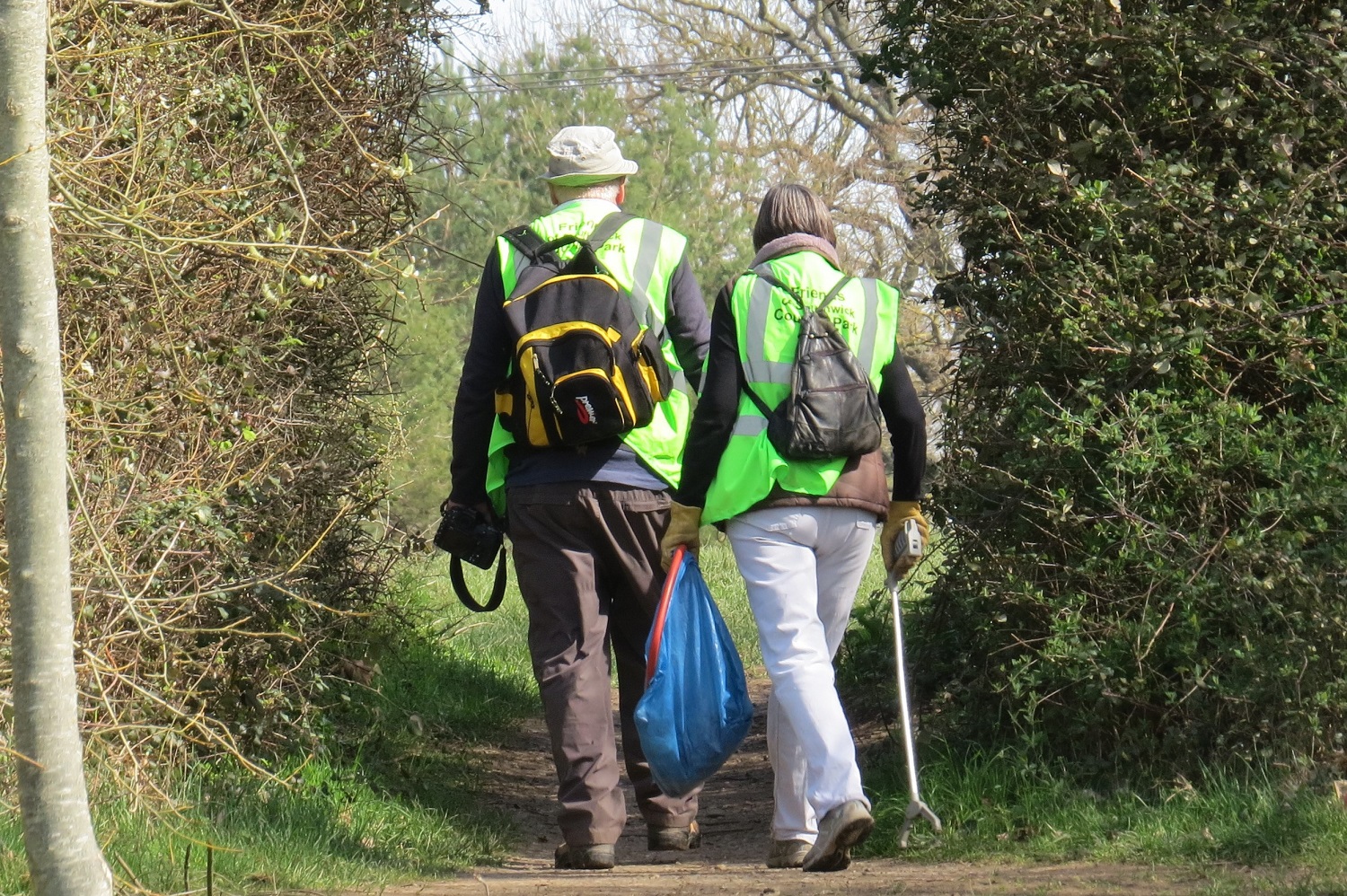A queen wasp (Vespula vulgaris) in the hedge in Sleepers Field.
She is eating honeydew from the bramble leaves. There are aphids in the tree above and they are excreting the honeydew; the bramble leaves are sticky and shiny with it.
By now, the second week of June, this queen has probably built the first few cells of her nest in a hollow tree or an abandoned rabbit burrow and laid her first few eggs. If the eggs have already hatched, she will be feeding the aphids to her developing larvae.
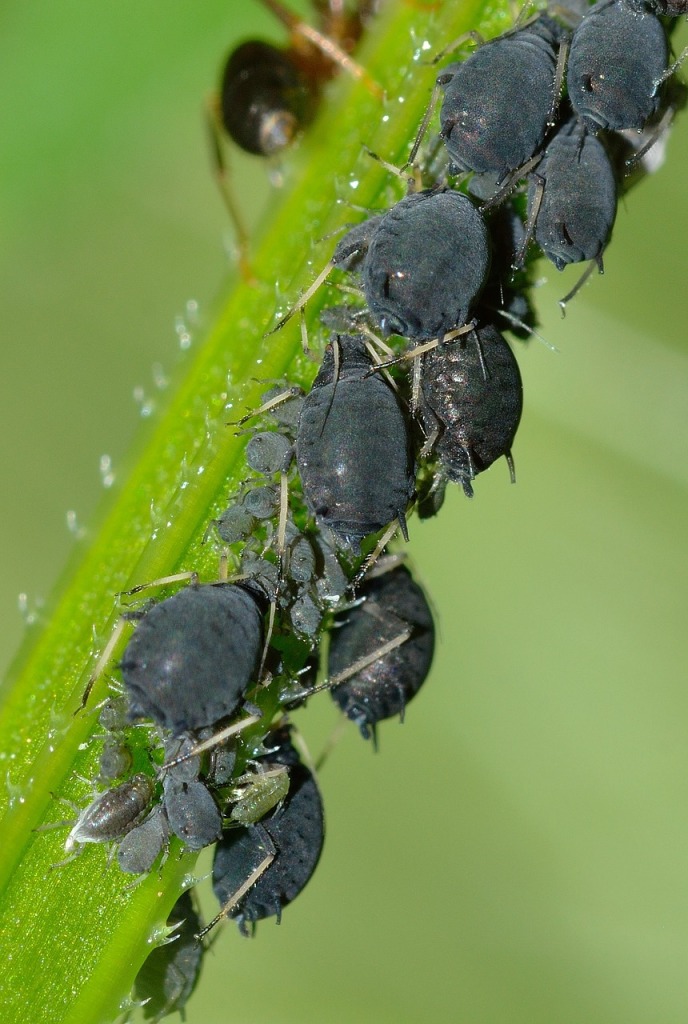
aphids 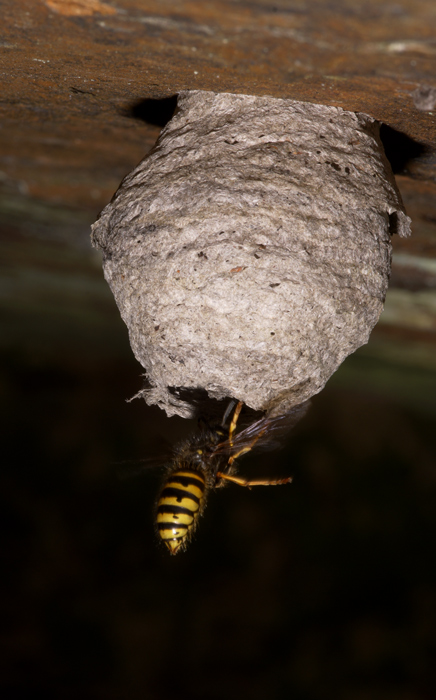
first few cells 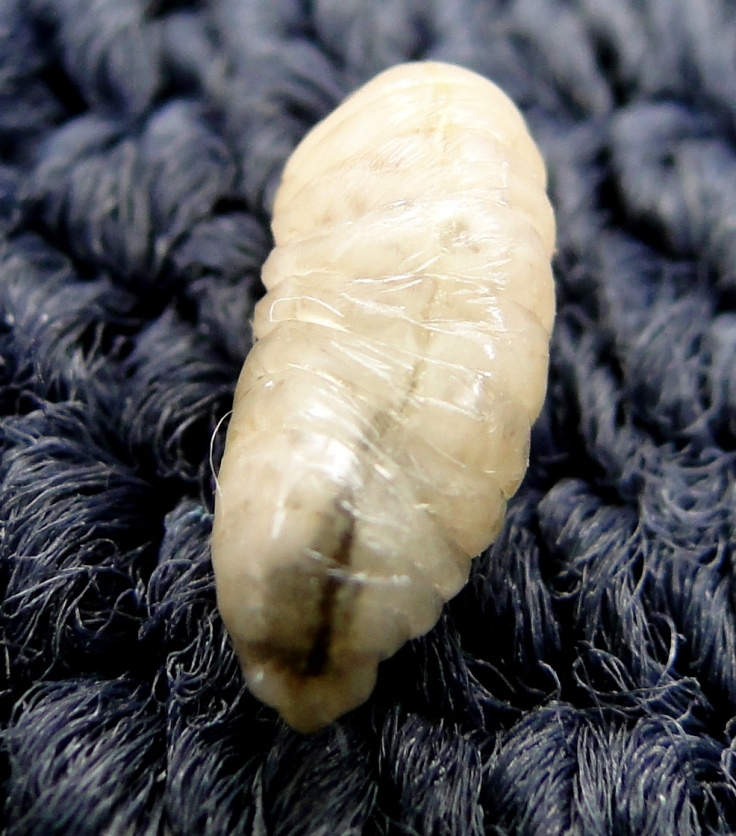
larva
She does not have the mouthparts for eating the aphids herself. She has mandibles that are used for catching and carrying insect prey to her larvae but she can’t eat that prey. She and all the adult wasps in the colony are nectar-feeders with mouth parts similar to those of a bee.
Her larvae, probably feeding on aphids and caterpillars at this time of year, excrete a honeydew of their own: a sugary liquid that becomes an important part of the diet of the queen and the colony’s future adults.
When these first larvae have pupated and become adult workers, they will take over some of the business of looking after the nest, building more cells and hunting for food and water for the larvae. The queen will concentrate on laying more eggs.
There will be a critical point in the colony’s development at which the queen will no longer leave the nest. Her role will be solely to lay eggs, about a hundred a day, while the workers run the nest and do the hunting.
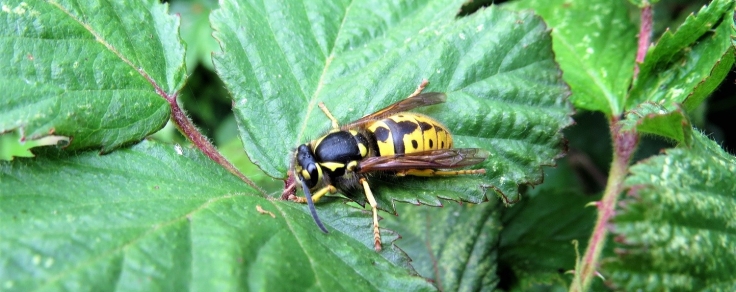
Pictures by Suzanne Humphries or as attributed
Conservation status: common and widespread; population declining
More about wasps below
